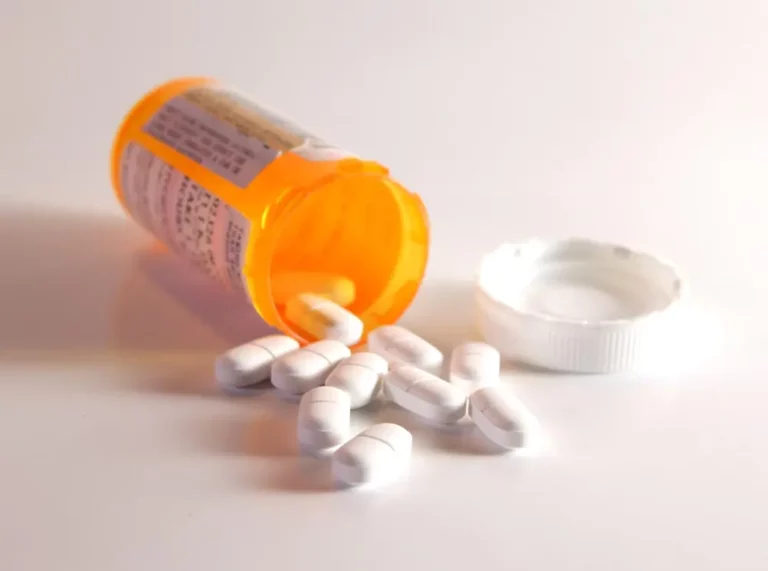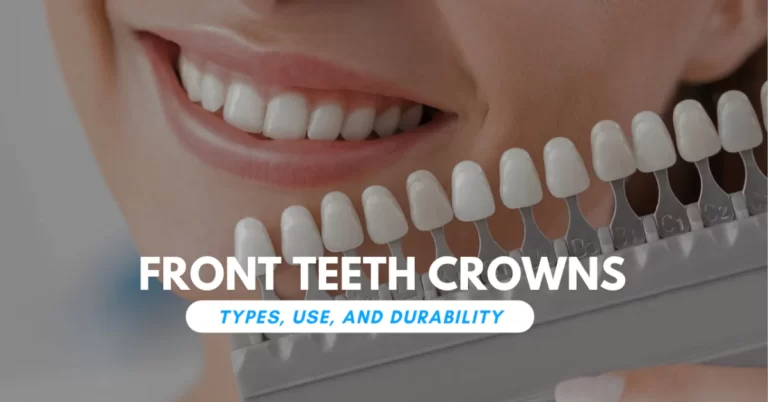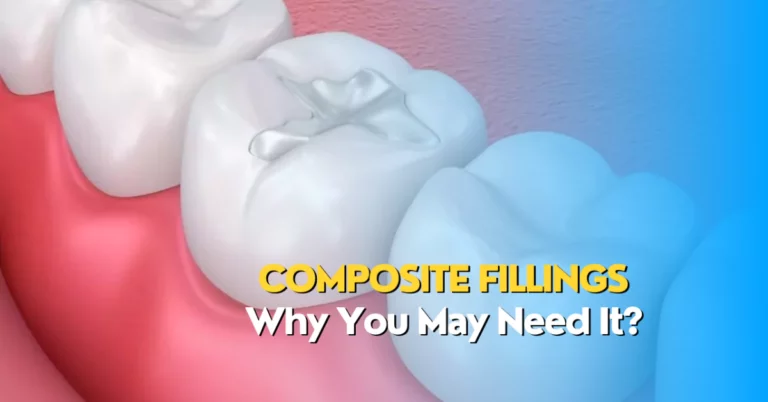Tartar Breaking Off Back of Teeth: Causes and Prevention
Have you ever noticed a hard yellowish substance on the back of your teeth? That’s tartar, which can cause severe problems for oral health. Sometimes, you feel tartar breaking off back of teeth. But what does that mean? And how can you prevent tartar from building up in the first place?
This article will focus on these questions, explaining what tartar is and how to eliminate tartar from your teeth and gums.
What is Tartar?
Tartar is a hardened plaque that develops on your teeth and gums, also called dental calculus. After you eat or drink, plaque—a sticky film of bacteria—continually builds on your teeth.
Brushing and flossing can readily remove plaque, but if you don’t do it frequently, plaque can solidify and become tartar.
What are the Symptoms of Tartar on Teeth?
Tartar can cause various symptoms depending on its location and severity.
Some of the common signs of tartar on teeth are:
- Yellow or brown stains or spots on your teeth
- A rough or uneven texture on your teeth
- Bleeding or swollen gums
- Gum recession or pockets between your teeth and gums
- Tooth sensitivity or pain
- Loose or shifting teeth
Why and How Does Tartar Break Off?
Tartar can break off from your teeth for various reasons.
Some of the possible causes are:
- Chewing hard foods or objects
- Grinding or clenching your teeth
- Trauma or injury to your mouth
- Aging or wear and tear of your teeth
When tartar breaks off from your teeth, it usually comes out in small pieces or flakes. You may not notice it until you see it in your saliva or tongue.
Is it Tartar Breaking off Teeth or a Chipped Tooth?
Now, let`s discuss tartar breaking off back of teeth. Sometimes, it can be hard to tell if what you see or feel in your mouth is tartar breaking off or a chipped tooth. Both can look similar and cause similar symptoms, such as pain.
However, there are some ways to distinguish them:
- Tartar is usually yellow or brown, while a chipped tooth is generally white or grey.
- Tartar is usually rough or uneven in texture, while a chipped tooth is usually smooth or jagged.
- Tartar is usually located on the back of your teeth or along the gum line, while a chipped tooth can occur anywhere on your teeth.
- A dental cleaning can remove tartar, while a chipped tooth may need to be repaired or replaced by a dentist.
Should You Be Concerned?
Tartar breaking off from your teeth is not a life-threatening situation, but it is not something you should ignore either. It means you have a lot of tartar buildup on your teeth, which can lead to severe oral health issues. Tartar breaking off \also indicates that your teeth are weak or damaged.
Therefore, you should be concerned about tartar breaking off from your teeth and take steps to prevent it from happening again.
What Should You Do When Tartar Breaks Off?
If you notice tartar breaking off from your teeth, here are some things you should do:
- Rinse your mouth with hot or salt water to remove debris and bacteria.
- Check your mouth for any bleeding, swelling, or pain. If you have any symptoms, apply an ice pack to the affected area.
- Inspect the broken piece of tartar and see if it has any sharp edges. If it does, be careful not to cut yourself.
- Call your dentist and make an appointment. Tell them what happened and ask for their advice.
- Follow your dentist’s instructions for treatment and prevention.
What Happens If I Don’t Remove Tartar?
If you don’t remove tartar from your teeth, you are putting yourself at risk of developing various oral health problems, such as:
- Cavities: Tartar can erode tooth enamel and create holes or cavities. If left untreated, cavities can result in tooth loss.
- Gum disease: Tartar can irritate your gums and cause them to bleed. Gum disease can affect both oral and overall health.
- Bad breath: Tartar can harbour bacteria that produce foul-smelling compounds that cause bad breath or halitosis.
- Tooth staining: Tartar can stain your teeth with yellow or brown colours that are hard to remove.
- Tooth sensitivity: Tartar can expose the dentin layer of your teeth, which is more sensitive to temperature, pressure, and acidity.
How do Dentists Diagnose Tartar?
Dentists diagnose tartar by examining your teeth and gums visually or with the help of X-rays. They look for signs of tartar, such as yellow or brown stains, rough or uneven texture, bleeding or swollen gums, or gum recession.
Dentists also use special tools such as probes or explorers to feel for tartar on your teeth and measure the depth of the pockets between your teeth and gums. They can also use devices such as disclosing tablets or solutions to reveal plaque and tartar on your teeth.
How to Eliminate Tartar?
Getting frequent professional cleanings from your dentist is a viable approach to getting tartar off of your teeth. Your teeth will be polished to remove tartar and make them smooth and shiny.
However, dental cleanings alone are not enough to prevent tartar from forming again. You also need to practice good oral hygiene at home.
Follow these tips:
Brushing
Brush your teeth at least twice daily with a soft-bristled toothbrush and fluoride toothpaste. Brush for two minutes each time and cover all the surfaces of your teeth.
Flossing
Floss your teeth at least once daily with a dental cleaner. It removes food particles from between teeth where brushing cannot reach.
Mouthwash
Use an antibacterial mouthwash after flossing and brushing to rinse away any remaining plaque and bacteria. Mouthwash also helps freshen your breath and prevent cavities.
Eating Healthy
Eat a balanced diet of vegetables, lean proteins, and dairy products. These foods provide essential nutrients for your teeth and gums and help prevent plaque.
Regular Dental Check-ups
Visit your dentist at least twice a year for routine exams and cleanings. Your dentist can detect and remove tartar buildup on your teeth and gums.
Drink Plenty of Water
Your mouth stays fresh and wet thanks to water. Additionally, it aids in cleaning plaque and food debris off your teeth and gums.
Baking Soda
A gentle abrasive like baking soda can help you clean tartar and stains from your teeth. Additionally, it helps maintain a pH balance and neutralise the acids in your mouth.
Dental Cleaning
Plaque and tartar are removed from teeth and gums during a dental cleaning.
Typically, a dental cleaning includes the following actions:
- Examination: Your dentist will check your teeth and gums and look for signs of decay, disease, or damage. Your dentist may also take X-rays to check for any hidden problems.
- Scaling: Your dentist will use a scaler, a metal tool with a pointed tip, to scrape off the plaque from your teeth and gums. Your dentist may also use an ultrasonic device.
- Polishing: Your dentist will use a polisher with a rubber cup and a paste to polish your teeth and make them smooth and shiny. Polishing also helps remove any stains from your teeth.
- Fluoride: Your dentist may apply fluoride to your teeth, a mineral that strengthens your tooth enamel and prevents cavities. Fluoride may come as a gel, foam, or varnish applied with a brush or tray.
Why Should Tartar Buildup Only Be Removed By a Professional?
Tartar buildup should only be removed by a professional because:
- Tartar is hard and firmly attached to your teeth and gums
- Tartar can be located in areas that are difficult to access or see
- Tartar removal requires special instruments and techniques that only a dentist can use
- Tartar removal can cause bleeding, pain, or sensitivity if not done properly
- Tartar removal can prevent or treat oral diseases that only a dentist can diagnose and treat
Frequently Asked Questions (FAQs)
How do you deal with tartar breaking off back of teeth?
You can`t break up tartar on the back of your teeth by yourself. Tartar is hard and firmly attached to your teeth and gums. Trying to break up tartar on the back of your teeth with tools can damage your tooth enamel and cause an infection.
The best way to prevent tartar from forming on the back of your teeth is to practice good oral hygiene.
Plaque vs tartar: what’s the difference?
Plaque and tartar form on your teeth after eating or drinking.
However, they have some differences:
- A soft, sticky bacterial coating called plaque continually forms on your teeth. Brushing and flossing are two simple ways to get rid of plaque.
- Tartar is hardened plaque exposed to minerals in your saliva and calcified over time.
- Plaque and tartar both cause damage to your teeth and gums, but tartar is more harmful than plaque.
Why do I have black tartar on my teeth?
Black tartar on your teeth is tartar stained by certain substances or factors.
Some of the possible causes of black tartar on your teeth are:
- Smoking or chewing tobacco
- Drinking coffee, tea, wine, or cola
- Eating dark-coloured foods such as berries, chocolate, or soy sauce
- Taking certain medications such as iron supplements or antihistamines
- Having a genetic predisposition or a metabolic disorder
Conclusion
Tartar breaking off back of teeth is common for various reasons. However, it is something you should take with effort. It can cause serious oral health problems if left untreated.
The best way to prevent tartar from forming and breaking off from your teeth is to practice good oral hygiene. You should also avoid or limit the factors that can cause tartar formation, such as smoking. If you notice tartar breaking off from your teeth, you should not panic but take action.






